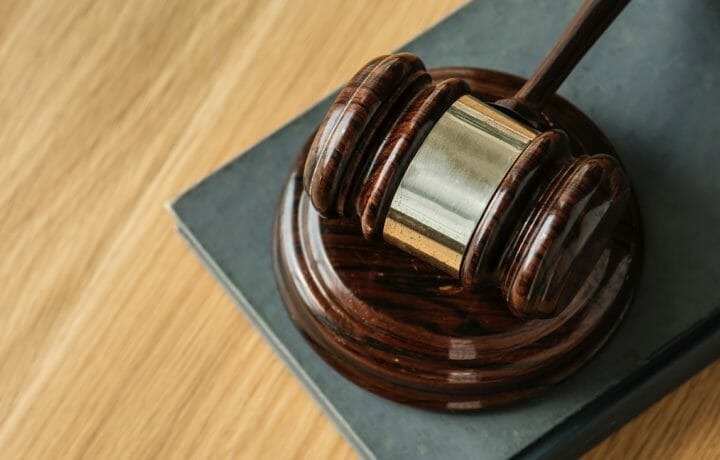Word on the street (and by street, I mean internet) is that DCSA has taken over a substantial portion of security clearance hearings that have been historically handled by DOHA (the DoD Defense Office of Hearings and Appeals). The transition, which took effect on December 8, 2024, was made without fanfare or much information regarding the new process. Now, I know what you’re thinking: isn’t DOHA a gold standard for due process? Generally, yes, it is. You may also be thinking, hasn’t DCSA already bitten off more than it can chew with Trusted Workforce 2.0 (where’s the PVQ? *cough*cough*)? No comment. Nevertheless, DCSA has spoken.
With this move, however, there is a notable positive change for federal employees: while federal employees were not previously afforded a DOHA hearing or personal appearance until after their clearance was revoked, federal employees will now be afforded a personal appearance before that decision is made.
While many questions remain about this new process, DoD has dropped some breadcrumbs. Here’s what we know so far.
How will federal employees and service members be impacted?
These changes primarily impact federal employees and service members. Prior to this change, when a service member or federal employee at DoD (or any agency that contracts with DoD to manage the clearance process) received a Statement of Reasons, they would only have the right to respond in writing before a determination was made. Then, if the individual’s clearance was revoked, they would have the chance to appeal, which included the right to a personal appearance. DOHA would hold the personal appearance in the form of a hearing before an administrative judge and the judge’s recommendation was then reviewed by a Personnel Security Appeals Board.
Both the former process and the new process are technically “personal appearances”; however, the DOHA personal appearance is also referred to as a hearing. For the sake of clarity, the DOHA personal appearance will be referred to as a “hearing” below and the DCSA process and other agency personal appearances will be referred to as “personal appearances.”
After the December 8, 2024, change, service members and affected federal employees will have the right to a personal appearance prior to a determination. Although DoD has provided little information regarding this process, based on the information available, the process resembles the personal appearance process for other government agencies. The primary differences between a “hearing” and “personal appearance” are explained in more detail below.
How will contractors be impacted?
Luckily, the hearing process has not changed for contractors’ collateral clearances (Confidential, Secret, Top Secret). Adjudication will continue with DOHA, business as usual. SCI adjudication, however, will transfer to DCSA under this change.
What is the difference between a hearing and a personal appearance?
A hearing before DOHA is the opportunity to be heard before an Administrative Judge. The Department may have counsel, and the applicant is also entitled (but not required) to have counsel. Each side may make an opening statement and closing statement and the applicant offers information and answers questions regarding the Agency’s concerns. A hearing also affords the applicant the right to have witnesses speak on their behalf.
Following the hearing, the Administrative Judge issues a written recommendation to the Personnel Security Appeals Board (PSAB). These PSAB decisions are not published. Because DOHA does publish its decisions for contractors, however, (anonymously, of course), folks appearing before DOHA have some insight into how the adjudicative guidelines will be applied.
A “personal appearance” typically consists of a meeting with the deciding official and the chance to explain, in person, why the allegations are incorrect and/or should be mitigated. As with a hearing, the agency may have counsel present, and the applicant is also entitled (but not required) to have counsel. Witness testimony is generally not permitted. DCSA has not provided any information regarding the format of its personal appearances, whether it will permit witnesses, or whether it will publish decisions.
Who will make the decision?
According to DCSA, affected individuals will have a personal appearance before a DCSA “Senior Adjudicator” who will make the decision.
DOHA permits in-person appearances—will this still be an option?
No, it does not seem so. DCSA’s personal appearances are solely described as virtual. While virtual appearances have conveniences, the ability to speak to the adjudicator in-person, human-to-human, can be a meaningful difference when it comes to assessing credibility—a significant function of the personal appearance.
How does this compare to other agencies?
Prior to this change, DoD and the Department of Energy were the only agencies that provided an administrative hearing. This covered a significant portion of federal employees; however, there were still quite a few agencies that followed a pared down personal appearance model. For example, DHS, Department of State, and every non-DoD intelligence agency provide applicants with only a “personal appearance” that does not involve an administrative judge, the right to in-person witnesses, or published decisions.
DoD’s 2024 change does not impact DOE employees or contractors.
What else should I know?
These modifications do not change the importance of speaking to the decision-maker (preferably) in person, be it at a hearing or a personal appearance, which can make or break a case is. Also, remember this is still a formal process and the agency may have an attorney present. These modifications may pare down the process, but the stakes remain the same.
The above content is not legal advice and does not create an attorney-client relationship. The handling and outcome of any legal matter depends on varying factors unique to each matter, and results cannot be predicted or guaranteed. Do not act upon information without seeking legal counsel.




